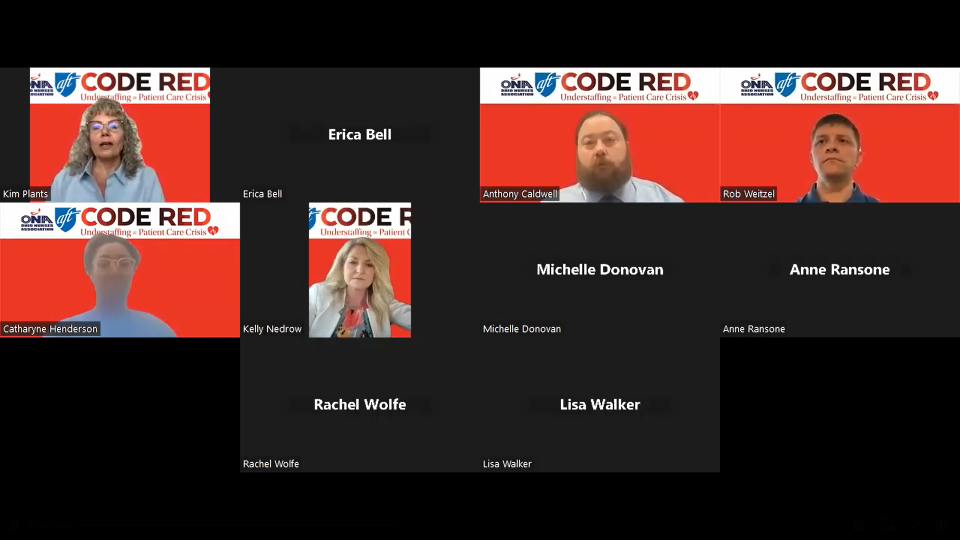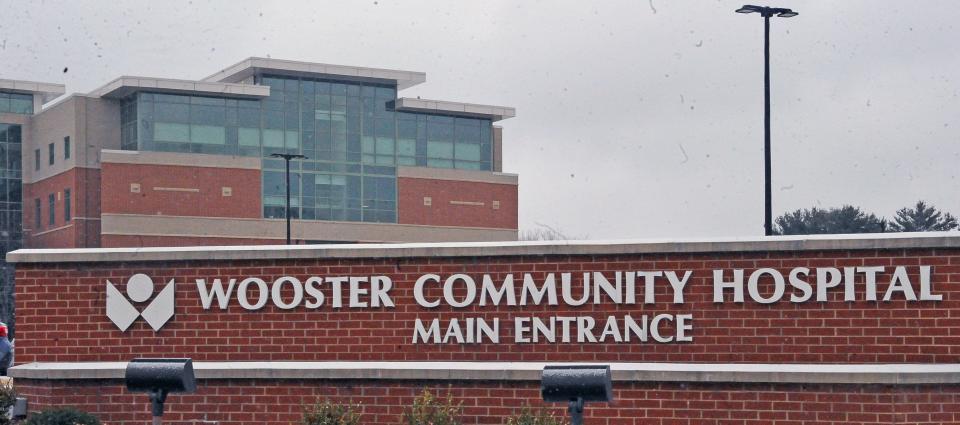Wooster Community Hospital removes BSN requirement amid nationwide nurse shortage
WOOSTER ― Three years after COVID-19 began, the medical field is still reeling from bedside nursing staffing shortages that threaten patient care and safety.
The Ohio Nurses Association, an advocacy organization for nurses, sounded the alarm bell on the matter at a news conference Tuesday.
COVID: Northeast Ohio hospitals make masking optional as federal COVID health emergency ends
For Ashtabula County Medical Center Nurse Kim Plant, the more patients assigned to one nurse overwhelm already stressed and exhausted nurses.
"The hospital I work at is a very rural hospital, and we have always had staffing challenges up until COVID and have always been able to meet them," Plant said at the news conference. "Now, we're struggling."
Most hospitals across the state are experiencing these problems, said Shelly Huff, the chief nursing officer at Wooster Community Hospital.
To recruit more bedside nurses, Wooster Community Hospital has enacted a novel change. They tweaked hiring requirements in late April and early May, eliminating the Bachelor of Science in Nursing for new hires.
Low nurse to patient ratios

For Plant, the ratio of nurses to patients has dwindled, making it hard to provide quality bedside care. This includes being unable to talk with patients who have questions or give emotional support in stressful moments.
On night shifts, she said there are often seven to eight patients to one nurse.
At the James Cancer Hospital in Columbus, Staff Nurse Catharyne Henderson said before COVID emerged there were roughly 80 full-time nurses on her unit. Now there are 35.
"We have double or triple the workload," Henderson said.
Benefits: More Ohio farmers markets accepting SNAP benefits, increasing access to fresh food
There are no state regulations requiring the number of patients to one nurse, but ONA President Robert Weitzel said that as staffing issues worsen the nurse-to-patient ratio will likely become more lopsided.
Weitzel said some scholarly articles recommend anywhere between four patients to one nurse and one patient to one nurse depending on the severity of the situation.
Without sufficient staffing, more nurses are required to stretch and limit their time with the patients who might need it most, he explained.
To highlight this problem, ONA is issuing the Code Red Campaign, which urges hospitals, legislators and medical systems to improve working conditions while improving the attraction and retention of new hires, Weitzel said.

What is a BSN?
One possible solution to the staffing issue is being proposed by Wooster Community Hospital.
By eliminating the Bachelor of Science in Nursing (BSN) hiring requirement, WCH will increase the pool of applicants, Huff said.
A BSN is a degree earned by nursing students at the undergraduate level, she said. It usually takes between three to four years and is a prerequisite to being a registered nurse in Ohio.
There are faster routes to becoming a nurse, however. At roughly two years, it is possible to become a registered nurse with an associate degree in nursing.
Although a quicker program, Huff emphasized that to legally practice medicine, registered nurses need to pass a state exam.
Removing the BSN option will allow more students to become practicing registered nurses while also opening the door for licensed practical nurses, she said. The latter needs a certificate and to pass an exam to practice medicine
"Licensed practical nurses have the same practical knowledge as those with BSNs," she said. "With a BSN, they have a more rounded education with common core elements."
How eliminating the BSN requirement could help
In short, Huff said the hiring change will improve patient care by increasing the number of active bedside nurses throughout the hospital.
More nurses, she said, mean better patient care
When COVID-19 struck in 2020, Wooster Community Hospital needed all hands on deck, said WCH Vice President of Human Resources Tina Myers.
"We brought in (licensed practical nurses), and they did great," she said. "We value all nurses and believe we need to go back to hiring all types of nurses."
Because licensed practical nurses filled the necessary staffing gaps during the pandemic while providing quality care, Myers said it only made sense to focus on LPNs.
Removing the BSN requirement is not common across the medical industry, Huff said, but the hospital aims to partner with more local nursing programs to keep medical students in the county.
This includes providing scholarships and education programs, she said.
This article originally appeared on The Daily Record: Wooster Ohio Community Hospital tweaks hiring policy in nurse shortage

